Bacteria: An Overview
Bacteria are single-celled microorganisms that can be found almost everywhere on Earth. They come in a variety of shapes and sizes, and can have different effects on their environment, including humans.
Structure of Bacteria
Bacteria are prokaryotic, meaning they lack a true nucleus and other membrane-bound organelles. They have a simple cell structure, consisting of a cell membrane, cytoplasm, and genetic material in the form of a single circular chromosome.
Classification of Bacteria
Bacteria are classified into different groups based on their shape, size, and staining characteristics. The main groups of bacteria include:
- Cocci: Spherical or round-shaped bacteria
- Bacilli: Rod-shaped bacteria
- Spirochetes: Spiral-shaped bacteria
Role of Bacteria
Bacteria play a crucial role in various ecological processes, such as nutrient cycling, decomposition, and nitrogen fixation. Some bacteria are also used in industrial processes, food production, and even medicine.
Effects on Humans
While some bacteria are beneficial and necessary for human health, others can cause diseases and infections. Understanding how bacteria interact with humans is essential for preventing and treating bacterial-related illnesses.
Study Guide
Here are some key points to remember when studying bacteria:
- Describe the structure of a bacterial cell and the main components it contains.
- Explain the different shapes and classifications of bacteria.
- Discuss the ecological roles of bacteria in nutrient cycling and decomposition.
- Identify examples of beneficial and harmful bacteria and their effects on humans.
- Understand the importance of bacteria in various industries and their use in medicine.
Remember to review the differences between prokaryotic and eukaryotic cells, as well as the significance of bacteria in the broader context of microbiology and human health.
Good luck with your studies!
[Bacteria] Related Worksheets and Study Guides:
.◂Science Worksheets and Study Guides Sixth Grade. Fishes, Amphibians, and Reptiles

 Activity Lesson
Activity Lesson
 Worksheet/Answer key
Worksheet/Answer key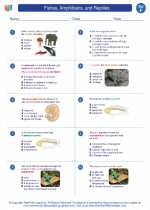
 Worksheet/Answer key
Worksheet/Answer key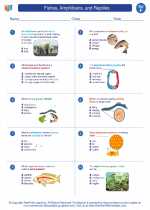
 Worksheet/Answer key
Worksheet/Answer key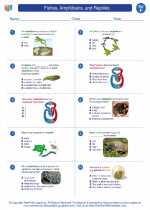
 Worksheet/Answer key
Worksheet/Answer key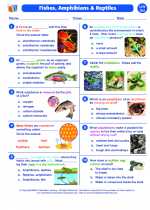
 Vocabulary/Answer key
Vocabulary/Answer key
 Vocabulary/Answer key
Vocabulary/Answer key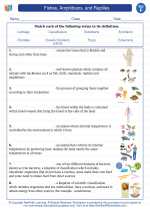
 Vocabulary/Answer key
Vocabulary/Answer key
 Vocabulary/Answer key
Vocabulary/Answer key
 Vocabulary/Answer key
Vocabulary/Answer key
